
Contents





“Most Remarkable Rebellion”





Focus · Written by Kim Samuel Photographed by Studio Kenn
Treasure Rooted in
Fertile Soil
Korean Ginseng
As historical records suggest, ginseng has remained Korea’s most precious plant for centuries. Geumsan-gun County in
Chungcheongnam-do Province, which was once part of the Baekje Kingdom (18 B.C.E.-660 C.E.), has centuries of history of cultivating this plant.
The county’s unique techniques and value were recognized and included among the Globally Important Agricultural Heritage
Systems of the United Nations’ Food and Agriculture Organization. Even today, Geumsan remains the hub of Korean ginseng.
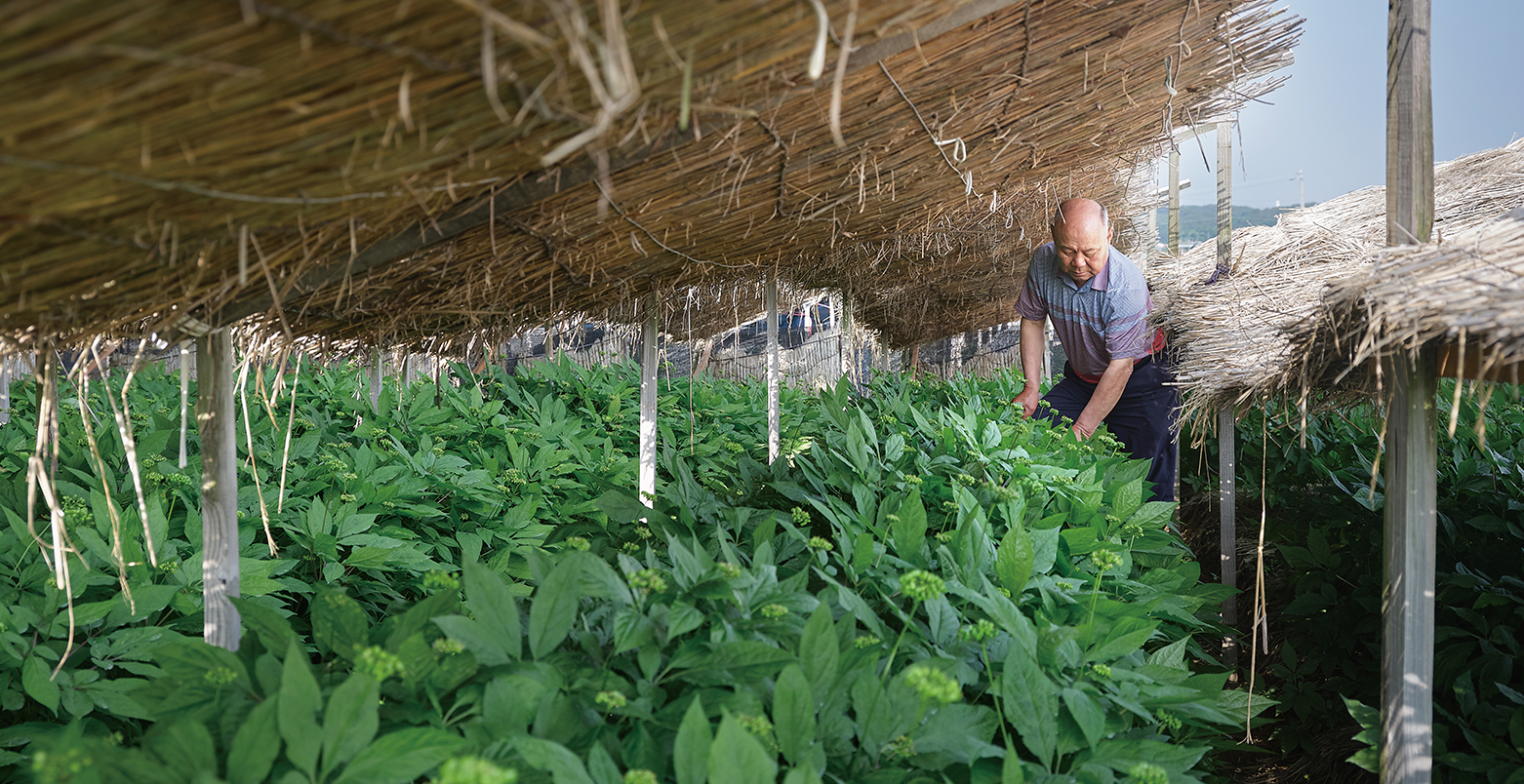
Sansam (wild ginseng), also called sim, grows in the mountains, while insam refers to ginseng grown on farms. Based on historical records, ginseng was considered the highest quality herb in Asia. As the plant did not grow on regular farms or sprout easily on mountains, full-time gatherers had to travel to the mountains nationwide to handpick it. Hearing the cry “I see sim!” deep in the mountains meant they found wild ginseng, and the expression is now a Korean idiom used by people who find something valuable. This shows how important ginseng has been to Koreans over the centuries.
The legend of insam’s discovery goes back 1,500 years, when the mother of a poor scholar grew so ill that nothing could cure her. Her son prayed in a cave on a mountain top for 100 days, after which a mountain god appeared. The deity pointed at greenery with red fruit growing on it and then disappeared. The desperate scholar picked up the plant, brought it home and boiled the root to make medicine. His mother miraculously recovered thanks to his concoction. Astonished by what happened, he started to plant the seeds from the red fruit and grew the same plant. He shared this with his neighbors, and this batch of seeds donated to his village is said to form the beginnings of the nation’s first artificial ginseng cultivation. This act of filial piety by the scholar and his sharing of his miraculous cure with others are considered the manner in which insam achieved its lofty status.
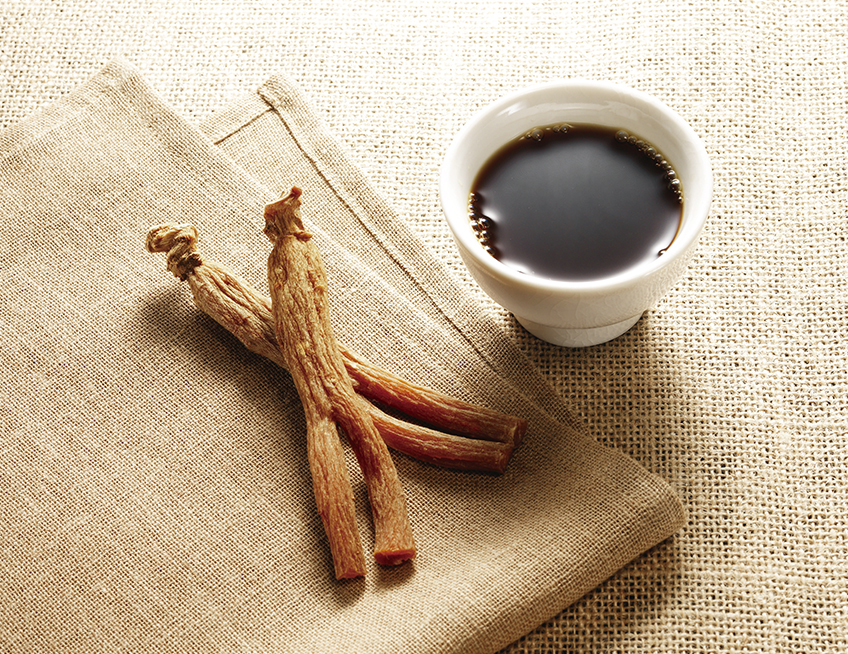
Processed ginseng products, including famous ginseng liquor, are available in Geumsan. © getty images
Optimal Conditions
Geumsan is the country’s largest center for the production, processing and distribution of ginseng for domestic sale and export. Jinaksan Mountain, the fourth-tallest mountain in Chungcheongnam-do Province, is on the southwestern side of the county. In the past, ginseng was farmed along the hills of this mountain, and the park here, called Gaesamteo, was created to reenact the legend of Korean ginseng’s origins.
The county’s secret to becoming the nation’s ginseng capital is its blessed nature, with an altitude of around 250 meters above sea level and a basin surrounded by mountains and hills. In addition, fertile soil and an optimal range of diurnal temperature allow cultivation of farmed ginseng that is most similar to the wild variety. Soil packed with nutrients made from nearby compost is perfect for helping ginseng grow deep roots. The plant’s ecological characteristics require half-shade in the forest, which blocks out all but a tenth of the sunlight and obstructs direct rays, and need sloping hills where water does not stay stagnant but drains well to prevent roots from decaying.
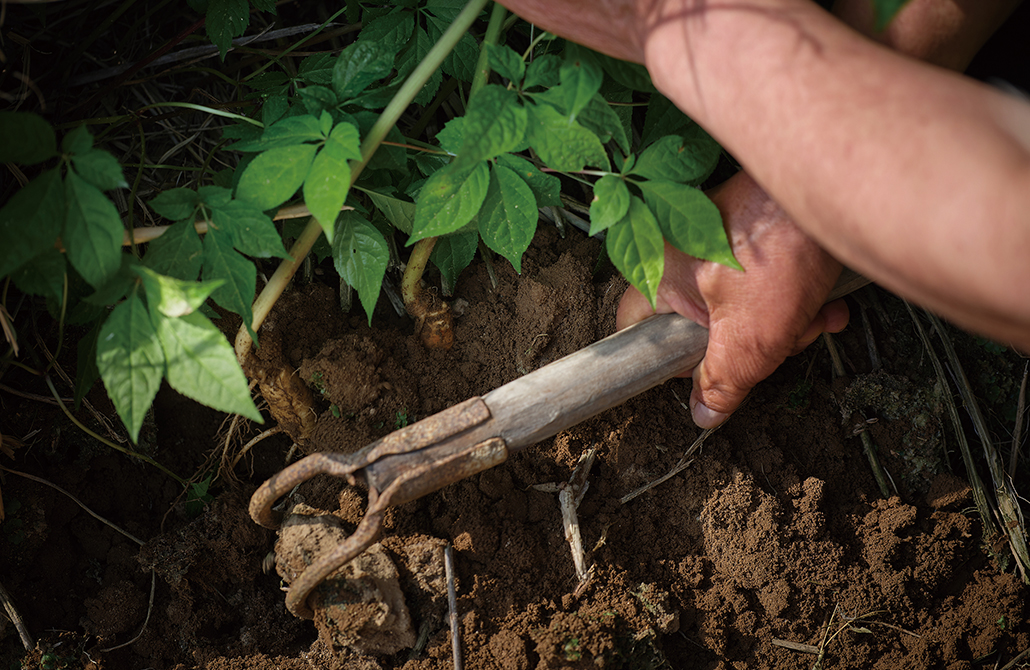 It’s crucial to protect the roots when harvesting Korean ginseng.
It’s crucial to protect the roots when harvesting Korean ginseng.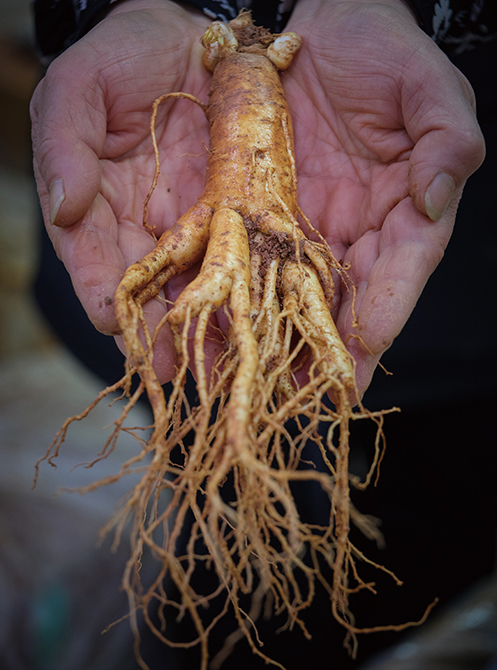 Ginseng that is trimmed and cleaned after harvest is called susam.
Ginseng that is trimmed and cleaned after harvest is called susam.Farmer’s Sweat and Strategy
Ginseng requires so much of a land’s energy to grow, making the land after cultivation vulnerable to blight and harmful insects that hinder the plant’s growth and development. The same land cannot be used for up to ten years once the ginseng is harvested. This is why the area used is constantly in a rotating cycle in which green manure crops are planted and the land is plowed over or rice is require long-term planning and action. Though ginseng farming is done in several regions in Korea, Geumsan is the rare location where it is systematically managed. In addition to the region’s unique climatic and geological features, the relentless efforts of farmers have helped create 500 years of Korean ginseng history.
The Geumsan Traditional Ginseng Agricultural System in 2015 was designated a Korean Important Agricultural Heritage System, and in 2019, it was listed among the Globally Important Agricultural Heritage System of the United Nations’ Food and Agriculture Organization (FAO) in addition to the others, including Traditional Gudeuljang Irrigated Rice Terraces in Cheongsan, Jeju Batdam Agricultural system, and Traditional Hadong Tea Agrosystem in Hwagae-myeon.
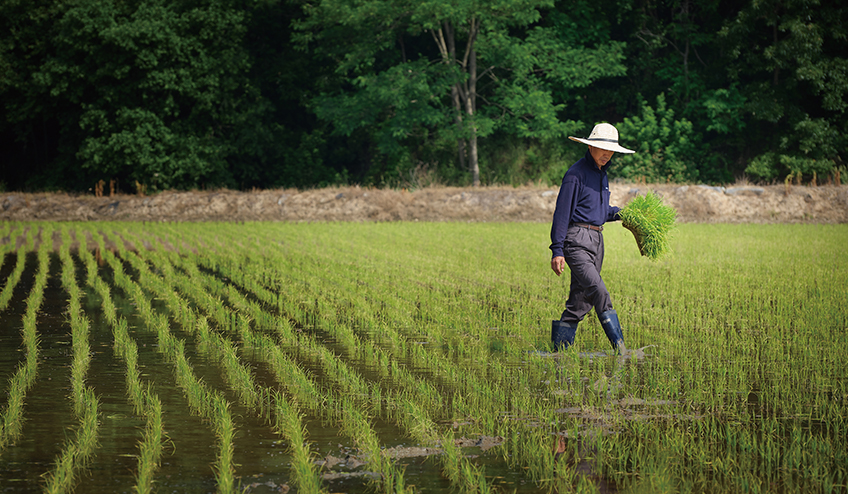
To restore the land’s energy, growing rice on the land once used for ginseng farming is a common practice in Geumsan.
The FAO said it highly values the eco-friendly rotating agricultural system in the county through methods. For example, an artificial germination process characterized by Geumsan’s traditional stratification process has seeds planted in containers with pebbles and sand. A Haegarim shading technique manages sun direction and wind circulation to prevent an abrupt temperature increase. County farmers also have devised an agro-farming design that naturally brings in the jet stream by placing shading installations of varying sizes that bring the wind from the bottom of the valley to the top of the mountain during summer. The county over the centuries has thus constantly advanced its agricultural knowhow to make farming more sustainable.
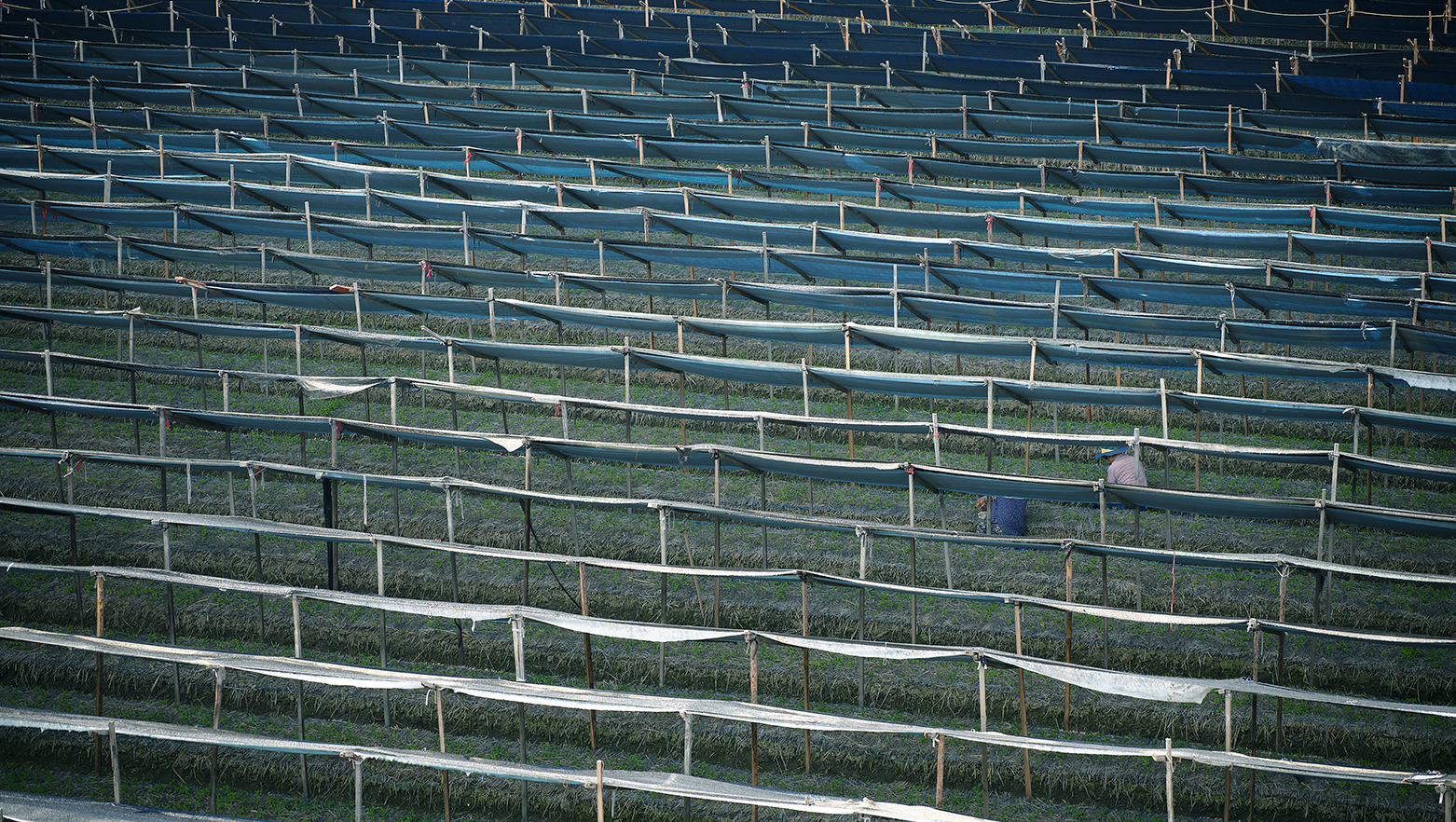 Farmers are working in Geumsan’s shaded ginseng farm.
Farmers are working in Geumsan’s shaded ginseng farm.
Growing Treasure
Popyeong Plain, with its well-drained soil and where Bonghwang-cheon Stream and the Geumgang River meet, is a ginseng farm covering more than 80 acres. The three-story observatory on the farm offers a bird’s-eye view of the farm as well as sights of the history of the region’s ginseng farming. Here, ginseng farmers and county officials jointly research and develop the crop. Even empty fields are carefully tended to for the sake of continuous cultivation.
Mid-July brings red fruit to the ginseng plant, but they do not taste as sweet as they look; their bitterness is rather surprising. Ginseng that is trimmed and cleaned after harvest is called susam (water ginseng) or saengsam (fresh ginseng); both are often consumed as a drink blended with milk or honey or used as a cooking ingredient. Steaming and drying saengsam produces hongsam (red ginseng). Baeksam (dried processed ginseng), with the skin slightly peeled and sun-dried, can be stored for a longer period and is used as herbal medicine or tea.
A wide variety of ginseng products are available at the Geumsan Ginseng Market, the largest of its kind in Korea. From raw to processed ginseng products such as ginseng caramel, candy or liquor, more than 3,000 tons of the valuable plant is sold here every year. Supporting 70 percent of the regional economy, Korean ginseng is crucial to county residents as its rising value knows no limits. With the annual Geumsan Ginseng Festival and Ginseng Expo in 2017 contributing to its branding, Geumsan’s ginseng industry is expected to reach new heights.
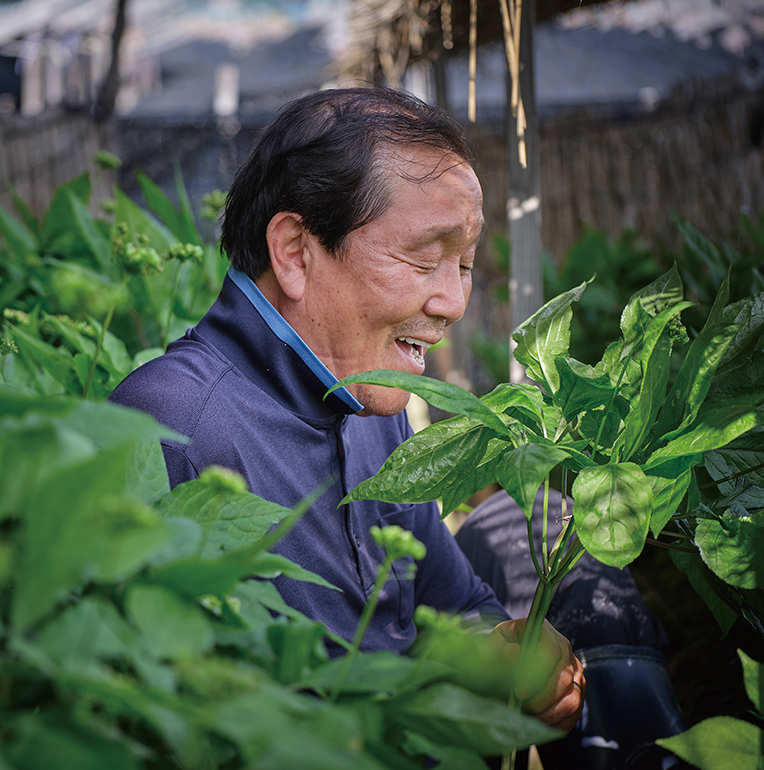 A ginseng farmer is smiling with the ginseng grown using the traditional Geumsan method.
A ginseng farmer is smiling with the ginseng grown using the traditional Geumsan method.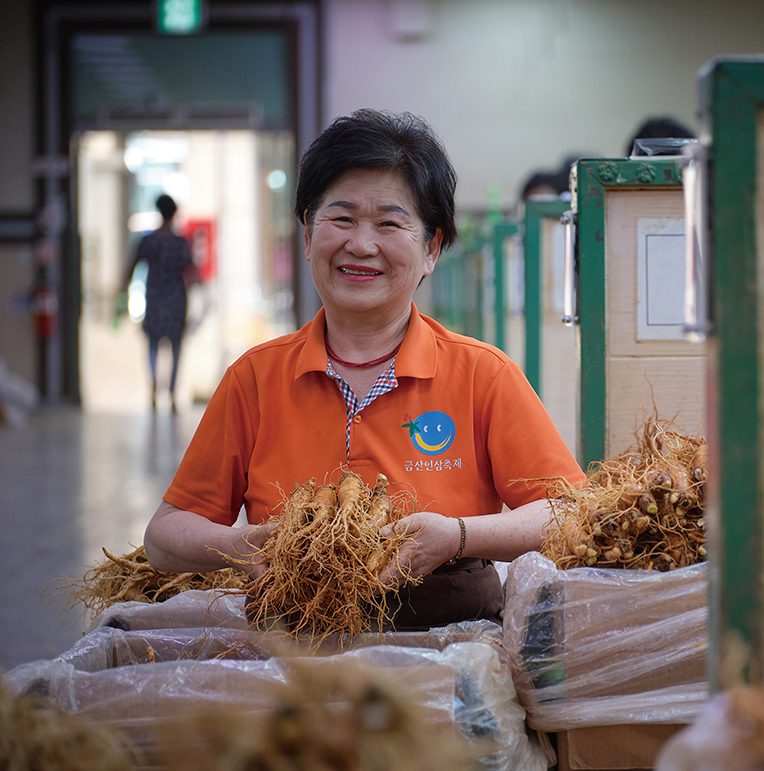 Geumsan is the ginseng capital of the country where 70 percent of ginseng is distributed.
Geumsan is the ginseng capital of the country where 70 percent of ginseng is distributed.Other Articles





“Most Remarkable Rebellion”










